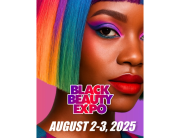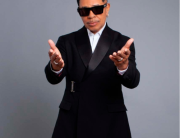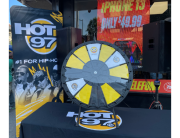Pusha Rod is someone who walks in his purpose, and he knows a thing or two about making a hit record. Serving as YG’s right-hand man, Pusha Rod is the definition of loyal, whether he’s producing, managing, or A&Ring for the West Coast rapper.
Ever since YG’s 2014 project My Krazy Life, Pusha Rod has played a vital role in creating and breaking hit records. And given his upbringing in the Eastside of Los Angeles, he’s come a long way from being a fly on the wall in the studio when YG and Mustard were first recording. It was immediately apparent the value that Pusha Rod brought into the room, offering his honesty and input… which later landed him a standout role as an A&R at Interscope Records.
Pusha Rod can be described in three words: the professional homie.
A nickname picked up 8 years ago, Pusha Rod explains, “I’m the only one who handles the business, but I’m willing to do anything. Even when I first started with YG, we used to throw parties. We used to pass out mixtapes, pass out fliers, whatever it is. I’ve always been down for any artists that I’ve been a part of. I like to keep the Professional Homie versus the manager title, kind of like GDC did “Corporate Thuggin’.”
Sheen spoke with Pusha Rod via Zoom to discuss his roots in Los Angeles, the making of YG’s “Toxic,” the biggest challenges in the music industry, his new studio in Los Angeles, his videogame, goals, and more!

How you been?
I’m good man, I can’t complain. Just up here at the studio.
How’s the studio doing?
It’s going really good. Last year was a great year. I’m excited for some of the stuff we got lined up for this year.
What part of LA are you from?
I’m from Los Angeles, born and raised on the East side. I grew up off 84th and Broadway, between Main and Broadway.
What was that like growing up for you?
The East side is very different from the West side, I’ll say that. A lot of my friends from my childhood are still my friends today. I was growing up on the East side, then I started going to school on the West side. It’s a big change, a big transition, but it’s dope. The East side don’t get a lot of love, don’t get a lot of credit. On the East side, people think they’re grimey. But it’s not like that if you go over there, if you experienced or have friends from over there.
I hear YG’s “Toxic” on the radio all the time. Were you a part of that record?
I was there. I didn’t produce the record, it was produced by DJ Swish and Larry Jayy. Amazing record. It was crazy because one night, we were at the studio house. Swish pulled up, he’s a producer for 4hunnid. He was playing beats for YG. He’s very particular when he plays beats. He’ll skip over 8 beats real fast, then get to one. He kept skipping, YG said “hold up. What was that? Go back to that.” He said “oh that’s nothing.”
It wasn’t even a full beat, YG said “this the one. Do this right now.” It turned out to be “Toxic.” It was amazing. We were in a great vibe and chemistry, we’re working on the album. It wasn’t forced. It was very organic. It turned out to be such a great record. It’s unbelievable. Nobody has credit in picking that record than YG. Because he knew from the moment he heard that sample. Literally, he played 3 seconds of it and skipped to the next thing. I didn’t even know what it was, YG’s like “wait, go back!”
It’s amazing being around an artist who understands themselves and their creativity, to know when a record fits them. Whether it’s just a skeleton, because it was no real beat. It was a sample with a couple of things, it was nothing. For it to not turn out the way it did and having such an impact on his world is amazing.
The music industry can be a lot. What would you say your biggest challenge is?
Keeping everybody on the same page. Sometimes, the label can be very excited, and the artist isn’t ready. By the time the artists get ready, the label gets excited about the new thing. Or vice versa. It’s about people knowing how to manage expectations a lot more, and being more creative.
Music is getting repetitive because people are okay with seeing and doing the same things. If that worked, it can work again. In the 90’s, early 2000’s, everybody strived to be original and an individual. You see so many people and so many artists trying to ride another artists’ lane or wave, I wish more people would be more true to themselves and who they are. Because the music would go further.

Talk about your new studio, Creative Soundz Recording.
I started Creative Soundz right after leaving Interscope. It wasn’t nothing bad, just time for a new chapter for them and a new chapter for me. Wanted to expand and grow my life, do other things. That’s how I got to have this. Leaving Interscope was a big blessing for me to have a 15,000 square foot studio on Melrose, 4 rooms, a creative space, private parking lot. It’s a blessing.
We opened September 25th, 2021. We’ve been open for a little over a year now, it’s been amazing. I’ve had a lot of amazing camps here. Just had a Rihanna camp, that was crazy. Bryson Tiller, G Herbo did his whole album here. A lot of my friends, a lot of artists throughout the industry have been supporting me through the journey. I like to thank every A&R, every coordinator, every label representative, every artist who’s stopped to think about Creative Soundz or choose to be booked here. It’s been amazing, the people who come here and the support I get.
I’ve had the opportunity to visit your studio, can you talk about the environment you’re able to curate? Given your experience in making hit records…
For me, I’ve been to a lot of different studios. Honestly, it’s a lot of studios that hip-hop artists go to that aren’t technically made for hip hop. The sonics aren’t sonically sound for hip-hop. It’s certain speakers we sound better on. Certain microphones, certain equipment we sound better on.
Going through the years of A&R, albums, and working with artists, seeing what they ask for: oh, I’m looking at this studio. Cool, do they have this kind of mic? Do they have these types of speakers? It’s understanding and making a safe environment that has those things to offer.
I also have what we call the 360 effect. Because where music is going today, artists love to be as creative as possible in the time for making the music. We have a creative space attached to our studio, with a green screen area. You can shoot content, a music video, your album cover at the same time of recording. We have a meeting lounge, so if you want to have the label come to you and talk everything creative, you can have that creative meeting at the studio, and then go and record. We also have a space for listening parties and album release events. My whole thing is about catering to artists.
What inspired your video game, Hop Out: The Streets of LA?
I created the game in 2017, honestly about myself. Everybody knows me, I’ve been running through the streets of LA since I was 10. I’m a real hustler. I’ve done everything from doing tattoos to having a Christmas tree lot during Christmas season. I had a vintage clothing store on Pico. I had a store in the Slauson Swap Meet. I’m a hustler, so it was about moving from the city, getting your money. That was the whole object of the game. It has a lot of dope landmarks in LA, a lot of things to appreciate. It’s like an LA version of Mario.

Do you have any goals for yourself?
The goal for me right now is to become the best version of myself, the best human being I could possibly be. I did my first philanthropy event last year, a back to school drive. It had a lot of dope sponsors and it was here at the studio. The fulfillment I got out of that is something I’ve never honestly felt before. I definitely want to get into more things like that this year: more give backs and trying to help artists create the best music again.
The role A&R is so lost that people think “oh, we just sign talent and forget about them.” That’s not me. It’s crazy because back in the day in the 80’s or 90’s, the A&R said this is the artist, this is the talent. It’s no question they’re signing them. Nowadays, you see artists get signed more of influencer based things and things going viral. They have that one viral record and they disappear, because it’s not about the art anymore. It’s about having great A&Rs connect with great talents that they can help get to the next level.
I want every artist I work with to have longevity. I’ve never gone for the biggest artist that has the most labels checking for them at once and it’s a competitive thing. I’ve always been the person to go for the underdog because they’re going to work twice as hard. They believe in themselves more, they know where they want to see their outcome. They’re not just worried about a record. Connecting with artists like that is my passion. Moving forward, I want to work with the dopest talent. I want to work with people who want to work with me because of what I believe and how I feel about music.
Anything else you want to let us know?
A&Ra are artists in themselves. When I look at A&Rs, I look at people like Diddy, Dame Dash, Baby. These are A&Rs who are influential enough and they moved around the right way to get the right respect in the game. Diddy says somebody’s hot, they hot. Pusha Rod says somebody’s hot, they hot.
That’s the goal of having multiple businesses and multiple sources of income. Because I don’t wanna be that guy, “oh yeah you just know me for that record.” Pusha Rod is gonna be an icon. Pusha Rod is going have a Starbucks, a Dave’s Hot Chicken, Wingstop, a Target. Pusha Rod is going to have everything in LA. That’s the mindset.
Photo Credits: Jimi







Dope